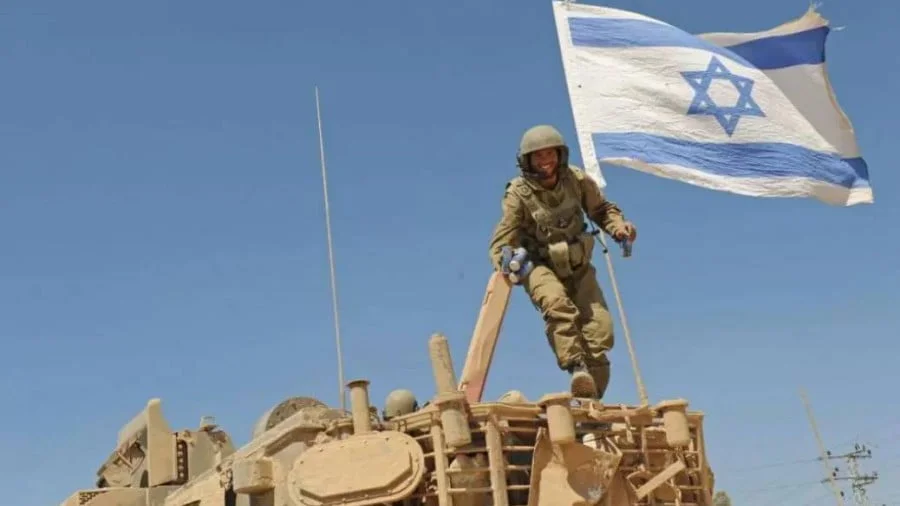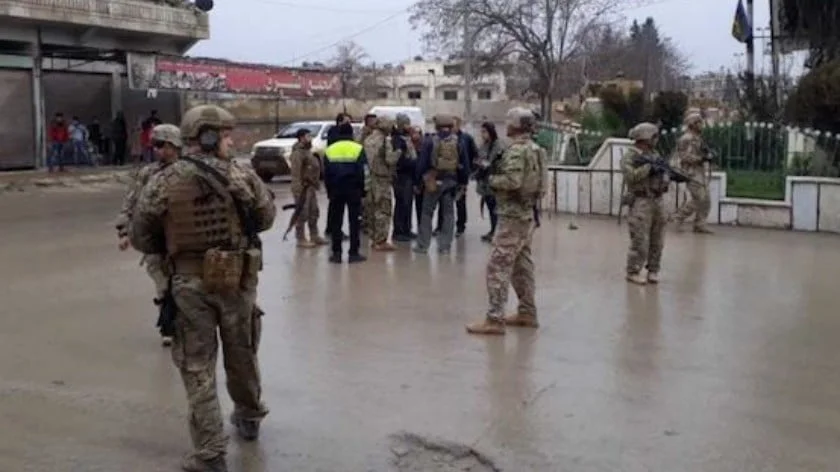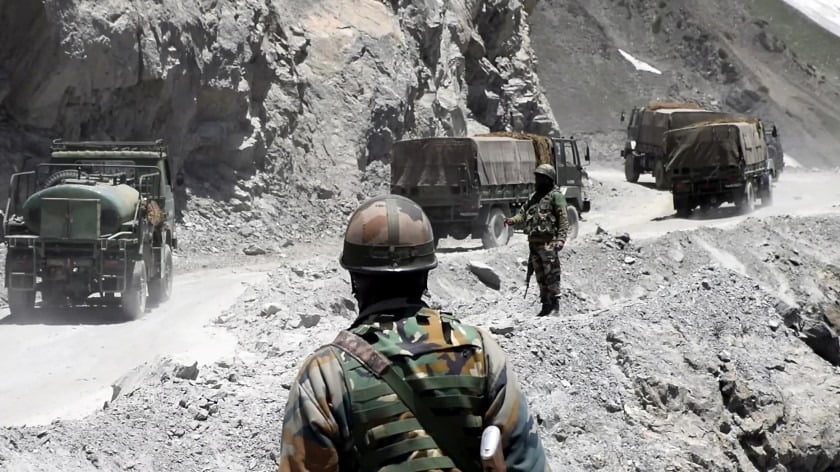Israel and Its Doctrine of Strategic Depth
Strategic depth is a military doctrine that refers to the distances between the front lines and the belligerents’ capital cities, industrial zones, centers of population etcetera. In simple terms, the greater the distance between an enemy threat and what needs to be protected, the greater the strategic depth.
Israel’s Need for Strategic Depth
Israel is a small country and is ranked 46th in the world in terms of land area. Since Israel’s creation in 1948 at the tragic expense of the Palestinians, the state has been worried about its lack of strategic depth as well as its antagonistic Arab neighbors. Its internationally recognized borders leave it just 137 kms across its widest and 14 km at its narrowest points. Moreover, Israel’s population is small, and it relies on reservists as their on-ground combatants, juxtaposed to Arab countries and their historically large standing armies. To make things worse, Israel’s “population, industry, and military infrastructure are heavily concentrated and within easy reach from the borders.” Due to such confines, the country fashioned an offensive/preemptive approach to warfare in contrast to adopting a more defensive “attack when attacked” posture. It was actually the country’s first Prime Minister Ben-Gurion that supported this security policy of “shifting combat onto enemy soil…given Israel’s lack of strategic depth”. Israel also partook in what can be called “artificial strategic depth” where its settlements, among other things, are fortified. It also aims to win wars as soon as possible due to such strategic limitations. Therefore, the country uses nuclear deterrence and advanced firepower to discourage attacks from neighboring Arab states and attack “preemptively should deterrence seem to be eroding.” Former PM Yitzhak Rabin stated this policy as: “The basic philosophy of Israel was not to initiate war, unless an active war was carried out against us. We then lived within the lines prior to the Six-Day War, lines that gave no depth to Israel—and therefore, Israel was in a need, whenever there would be a war, to go immediately on the offensive—to carry the war to the enemy’s land.”
Things took a histrionic turn after the Six-Day War in 1967. The war between Israel and a primary coalition of Egypt, Syria, Jordan, Iraq, Saudi Arabia was a decisive victory for the state. Israel anticipated a planned Egyptian invasion and preemptively struck and destroyed nearly all of Egypt’s military aerial assets as well as Syria’s thus allowing the state to enjoy air superiority and finish the war in a mere 6 days to the chagrin of the Arabs. Israel occupied the West Bank, Gaza Strip, Sinai Peninsula, and Golan Heights. Out of these territories, only the Sinai Peninsula was returned to Egypt later, while the others remain occupied.
These areas afforded the state a degree of strategic depth. The reasoning being that the occupied territories (OT) can be used as a buffer zone to absorb an attack, similar to how the British used the Federally Administered Tribal Areas (FATA) in British India to shield itself from Afghan or Russian ingresses. Israeli security analysts were now of the opinion that due to the OT, Israel could pursue a more defensive approach as it could now survive a first strike due to its augmented strategic depth. This thinking was found moderately correct in the October 1973 War when Syria and Egypt entered their territories (occupied by Israel) of Golan Heights and Sinai Peninsula respectively. Israel absorbed the initial attack and inroads made by Syria and Egypt – it was then able to successfully mount a counteroffensive, which led to another Israeli victory.
However, not everyone agreed with this new defensive posture, including Ariel Sharon. When Sharon took charge as minister of defense, he advocated that Israel revert to its pre-1967 offensive position. He pushed for this as he saw strategic depth/insulation of the OT being neutralized by the Arab armies’ increased mechanized, augmented mobility, and their acquisition of long-range weapons. After the 1982 invasion of Lebanon for which Sharon was significantly responsible, the offensive stance waned in popularity. However, it gained traction again by 1988 with Iraq’s use of surface-to-surface missiles (SSM) and Saudi Arabia’s purchase of long-range SSMs from China.
While Israel today might be in a relatively safer environ since its independence with some Arab states teetering and others placated (explained later), the threats to its existence are still palpable. Non-state actors such as Hamas, Islamic Jihad (is banned in Russia), and Hezbollah are enemies of the state and are the de facto fighting force of the oppressed Palestinians. While Hamas and Islamic Jihad (is banned in Russia) do not have any kind of tanks, aircrafts, or large standing army to invade Israel proper, their ability to launch countless rockets into Israel means that strategic depth is limited for the state. Due to this, Israel has invaded Gaza multiple times and has pursued ignominious military operations to squash Hamas and Islamic Jihad (is banned in Russia). Besides preemption and swift action, Israel uses the “deliberate use of disproportionate violence against civilians” as a “core part” of its military doctrine. Statistical evidence indicates that since the Gaza War (2008-09) up until the May 2021 conflict, 18,992 Palestinians (civilians plus combatants) have died compared to 1563 Israeli civilians and combatants – this means that a staggering 92.39% of casualties have been Palestinian.
Maritime Strategic Depth
Israel is acutely cognizant that there are two kinds of strategic depths, internal and external. The external kind lies beyond a country’s borders – in this case the sea. “The strategic depth that the Mediterranean offers will play an increasingly important role in Israel’s defense.” – and therefore the state has been intensifying its maritime strategic depth. An example of maritime strategic depth is the Revolutionary War, when the British were constrained due to them having to cross the Atlantic to attack the US.
In the last few years, significant offshore hydrocarbon reserves have been discovered in Israel’s territorial waters. In fact, its gas reserves have grown by over 40% in the past decade. The Tamar, Leviathan, and Katlan fields are some examples of this. Due to this, there has been a need to produce a more cogent naval force. These sea-based economic assets are contingent on Israel’s naval prowess, as are the diplomatic avenues that such assets open – i.e. these assets can mollify Israel’s neighbors through commercial activity. Israel has been working closely with Greece and Cyprus as well as the US naval fleet in conducting joint naval exercises. Most importantly, Israel’s new Dolphin-IIs (the INS Dragon) are said to be capable of carrying nuclear missiles bolstering its second strike capabilities if attacked by an enemy’s nuclear weapons. This has been on the Israeli agenda for a while, and achieving this has allowed the country to further its strategic depth.
Political Strategic Depth
While strategic depth is primarily a military idea, it has political and economic practicalities as well. The aftermath of the 1973 War is a good example of this. It paved the way for the Egypt-Israel peace treaty in 1979 where the Sinai Peninsula was returned to Egypt. While this might sound counterproductive, it was a judicious ploy, as it allowed Israel to befriend an anathematic and robust military power in Egypt. This assurance of peace has allowed Israel more strategic depth than the Sinai since it set a precedent for others that rapprochement with Israel can be considered. This is exactly what happened as Jordan (in 1994) entered into a peace treaty with Israel and other nations began re-examining their antagonism as well. This eventually led to even more rapprochement under the Abraham Accords as Arab and Muslim states such as UAE, Sudan, Bahrain, and Morrocco started diplomatic relations with Israel during the Trump presidency. The economic partnerships, trade, military cooperation, sharing of intel, tourism etcetera that transpires after peace is established makes going to war much more costly and onerous. For example, Egypt and Israel have been cordial for the most part since their treaty.
Pan-Arabism has also died down, and economic interests have unfortunately taken priority away from the Palestinian issue. Many GCC countries such as the UAE are examples of this as they continually diversify their economies and see Israel as a key partner.
Conversely, Iraq, Libya and Syria are a shell of their former selves. Lebanon too has economically collapsed and this will take a toll on Hezbollah, Israel’s archnemesis. Only Iran is considered a major threat – and oft-times Pakistan.
The biggest illustration of Israel’s political strategic depth is the United States as it “provides the kind of alternative strategic depth that Israel has always sought in order to compensate for its relative lack of territorial and other resources needed to blunt threats to its security.” The US has been romancing Israel at Palestine’s expense and has swayed the world to ignore for the most part the plight of the Palestinians. It has done this due to the monolithic influence it commands amongst countries, with the mainstream media as well as supranational entities such as the UN. Israel has benefited meteorically from US largesse, as it is the largest cumulative recipient of US foreign aid, receiving around $158 billion in bilateral assistance and missile defense funding. The US has also provided state of the art military tech as well as key intel to the Israelis, allowing the latter to become a modern military and intelligence juggernaut. The US’s military bases around the world, particularly in the Middle East, its political sway, as well as its reserve currency status, etcetera, all act as Israel’s strategic depth due to the one-of-a-kind relationship the two nations share. Moreover, it is important to highlight that the Abraham Accords, Camp David Accords, and other treaties would not have been possible if not for the aegis of the US.
The Future
Besides Hamas and Islamic Jihad, the diminishing US influence on the global stage as well as in the Middle East coupled with Chinese ascendancy (see BRI and Iran-Saudi Arabia détente) might be problematic for Israel’s strategic depth. Moreover, Iran is a real danger to the state and is known to be funding Hezbollah, who have embarrassed Israel in the 2006 Lebanon War. Netanyahu considers Pakistan a primary threat as well as it does not recognize Israel, has nuclear weapons, and possesses battle – hardened armed forces.
Most importantly, however, it is Israel’s own barbaric transgressions against the Palestinians that are ironically the raison d’être for it being constantly threatened. Its historic draconian treatment of the Palestinian people, which continues unabated under the current far-right government are fanning the flames of hatred and threats against the state. While Israel’s aggressive policy of preemptive strikes, nuclear deterrence, assassinations, and indiscriminate violence stems from its existential insecurities, the state tragically remains unaware that the ultimate strategic depth is in resolving the Palestinian issue humanely.







